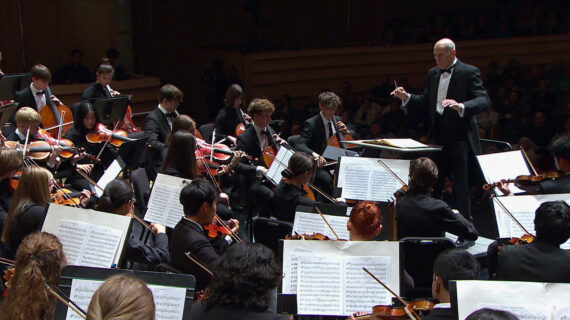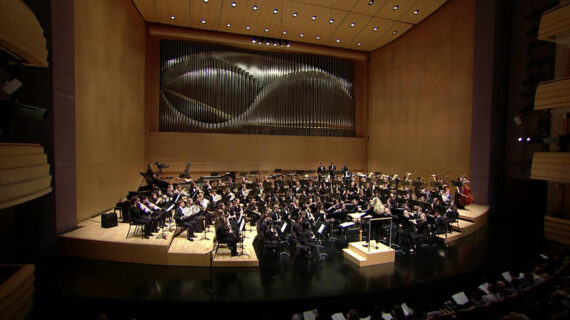Frederica Freyberg:
It’s been a rocky and violent weather week in southern Wisconsin. The National Weather Service confirms six tornadoes touched down over the late evening and early morning hours Wednesday and Thursday, two tornados in Dane County, two in Grant County and two in Green County. At week's end Governor Scott Walker declared a state of emergency in response to the storms. For the latest we turn to Todd Pritchard at Wisconsin Emergency Management, and thanks for being here.
Todd Pritchard:
Thanks for having me.
Frederica Freyberg:
What is the effect of the governor declaring a state of emergency?
Todd Pritchard:
It really frees up state assets and the National Guard to move in and help out wherever we’re needed. We’re ready to respond to whatever assistance is asked for.
Frederica Freyberg:
Now that authorities have been able to get out and survey and assess the damage what’s the worst of it?
Todd Pritchard:
The worst is the counties that the governor declared emergancies for, Grant, Green and Dane County. Those really got– Platteville, Madison and obviously, Verona really got hit hard, really got slammed.
Frederica Freyberg:
And it just keeps raining now. Are there concerns then about flooding?
Todd Pritchard:
Yeah. We’re watching the flooding very closely. Several rivers, streams around southern Wisconsin are under a flood warning right now. So yeah. That is something, especially as we get these storms coming in. It’s so hard to predict, right, if a storm kind of parked itself over a particular watershed, that it might really cause some trouble. We’re going to watch that very closely, especially over the weekend.
Frederica Freyberg:
Given the damage midweek from these tornadoes, how surprising was it that there weren’t more injuries?
Todd Pritchard:
I think it is a real testament to people really knowing what to do in a tornado, and I think it’s also the technology we have. You know, the cell phone alerts, the wireless emergency alerts that we now have in our cell phones really– a lot of folks got woken up in the middle of the night by that. And I think that kind of technology really helps save lives.
Frederica Freyberg:
And you’re saying too that that kind of technology is really so new.
Todd Pritchard:
It is, it’s only about two years old. Really if you think about it, we didn’t really, thankfully, have much of a chance to use it last year. We had very few tornadoes around the state of Wisconsin. But I think that technology, that's just one toolbox in your toolbox of warnings, right? It gets you great information. Another one are wireless– along with wireless emergency alerts are emergency weather radios.
Frederica Freyberg:
And in fact you brought some of those along today.
Todd Pritchard:
I did, because, you know, this is such a life saver. They're very inexpensive, you can pick one up for 25, 30 bucks at your local drug store, hardware store, home improvement store. This one is a model you plug in, leave on your kitchen counter top or maybe in your bedroom, and when there’s a tornado warning it goes off with a very loud tone, it texts what’s going on and then verbally tells you here’s where the storm is, here's where it's going, here’s where the dangers are. And of course, it's Wisconsin, we just survived a horrible winter. Everyone's trying to get outside, right? So having a portable weather radio with you, especially if you’re camping, fishing, anything like that, is so critical. Because at least it will get you that warning. On your cell phone, you may be out of range. You may not be able to get that warning.
Frederica Freyberg:
Now, you suggest that this white one that you brought in. You plug it in, so presumably there’s a battery backup.
Todd Pritchard:
Exactly. And that battery backup lasts for a couple of days. So even if you lose power, you’re still going to have that information coming to you.
Frederica Freyberg:
Before we spoke, you were intent on kind of talking about these radios. Is it that many people don’t have them yet or —
Todd Pritchard:
I think a lot of people– Well, there’s some misconceptions about them. I think back in the day they were big, clunky, hard to program kind of things. Now they’re pretty easy. They’re very inexpensive, they're so accessible, right? Even if you don’t have a cell phone or you don't have that kind of technology, they’re very accessible. And the biggest thing about them too is that overnight warning, right? Because during the day time maybe we’re watching television or we have some other means of getting alerted. But this Monday night into Tuesday morning event was a classic example. You’re sound asleep. This thing goes off, it’s going to wake you up and get you going.
Frederica Freyberg:
Because I talked to a number of people who slept through those outdoor sirens, even though they’re wailing and they’re constant.
Todd Pritchard:
Right.
Frederica Freyberg:
When you’re indoor with the windows closed, you can’t hear those.
Todd Pritchard:
And the wind is blowing and the rain is pounding. It’s very difficult. Sirens are part of our tool kit, right? It’s a part of our overall warning system. But don’t rely on sirens to be your only source. This should be one of your major sources of information.
Frederica Freyberg:
You have one of these?
Todd Pritchard:
I do. I have– Actually these are both from my house. So yeah, we do. And the texts and the wireless emergency alerts went off. I happened to have my cell phone next to my bed. So we had a lot of loud noise going on. But you know, that's interesting. I live over in McFarland. I could not hear the sirens, and I live fairly close to one. Again, part of our system, but shouldn’t be your only warning.
Frederica Freyberg:
All right, Todd Pritchard, thanks very much.
Todd Pritchard:
Thank you.
Search Episodes
Related Stories from PBS Wisconsin's Blog

Donate to sign up. Activate and sign in to Passport. It's that easy to help PBS Wisconsin serve your community through media that educates, inspires, and entertains.
Make your membership gift today
Only for new users: Activate Passport using your code or email address
Already a member?
Look up my account
Need some help? Go to FAQ or visit PBS Passport Help
Need help accessing PBS Wisconsin anywhere?

Online Access | Platform & Device Access | Cable or Satellite Access | Over-The-Air Access
Visit Access Guide
Need help accessing PBS Wisconsin anywhere?

Visit Our
Live TV Access Guide
Online AccessPlatform & Device Access
Cable or Satellite Access
Over-The-Air Access
Visit Access Guide
 Passport
Passport








Follow Us